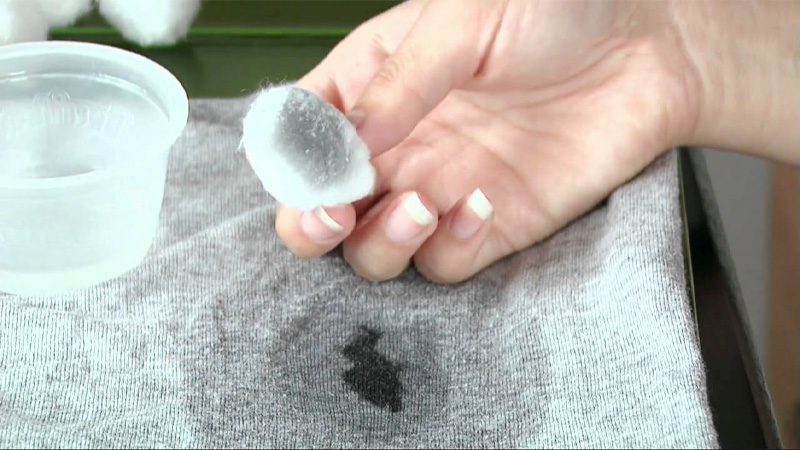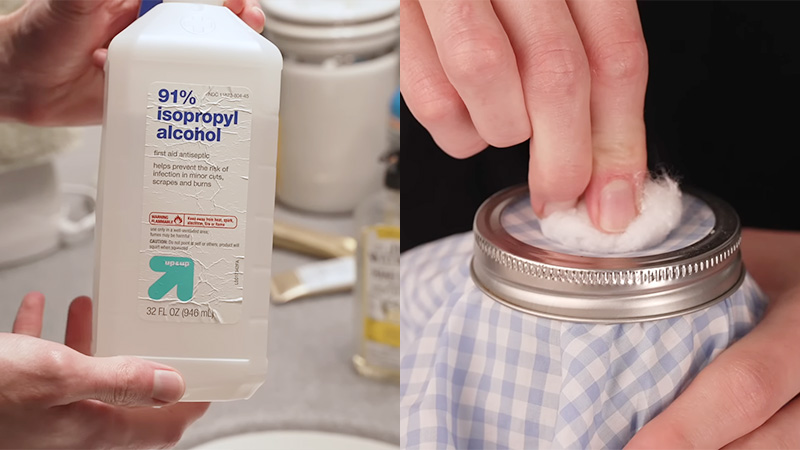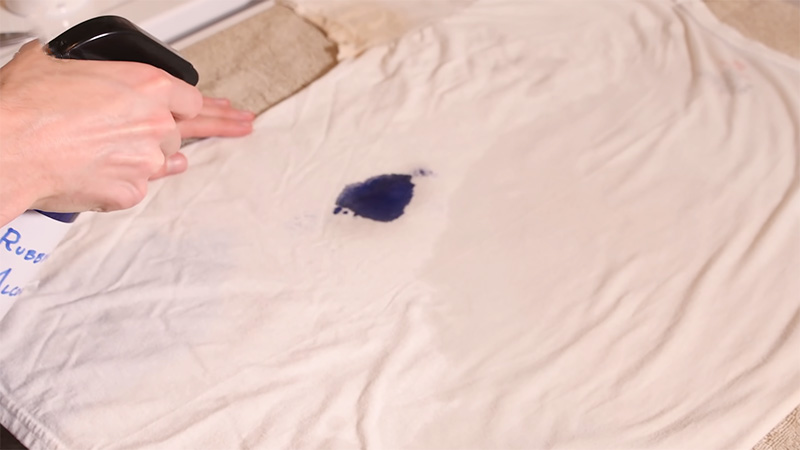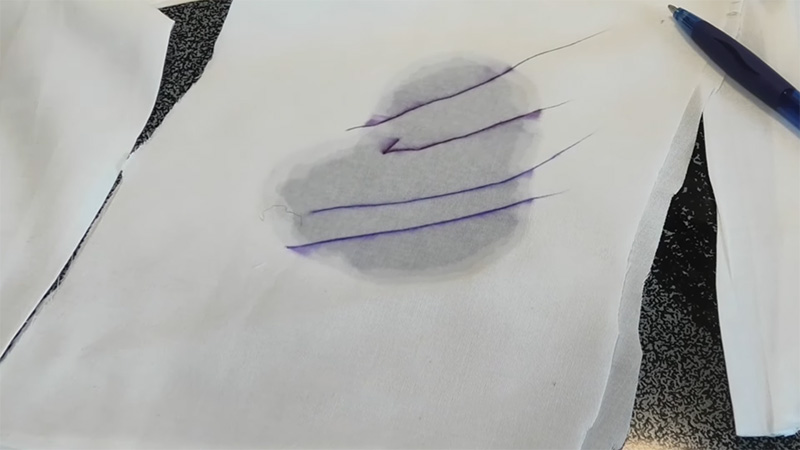Ink stains on fabric can be an unwelcome surprise, whether they result from a leaky pen, an accidental brush with an inkwell, or a simple oversight. However, with the right knowledge and techniques, the unsightly marks left by ink need not be permanent.
Learning how to get ink out of fabric is a valuable skill that can save your favorite clothing, linens, or upholstery from being marred by stubborn stains.
In this comprehensive guide, we will explore seven simple yet effective methods for removing ink stains from fabric. From the use of common household items like rubbing alcohol, milk, and vinegar to commercial stain removers and natural solutions, you’ll find a range of options to suit different fabrics and ink types.
With step-by-step instructions and valuable tips, you’ll be well-prepared to tackle ink stains with confidence and restore your fabric to its original, pristine condition.

How To Get Ink Out Of Fabric?
Ink stains on fabric can be stubborn, but with the right methods, you can effectively remove them. Here are the simple methods:
Rubbing Alcohol
Soak a cotton ball or cloth in rubbing alcohol and gently dab the ink stain. Avoid rubbing, as it can spread the ink. Blot from the outside of the stain toward the center. Rinse with cold water and launder as usual.
Milk
Soak the ink-stained area in milk for several hours or overnight. Rinse with cold water and launder. This method can be particularly effective for fresh ink stains.
Hairspray
Spray an alcohol-based hairspray directly onto the ink stain. Let it sit for a few minutes, then blot it with a clean cloth. Rinse with cold water and launder.
Hand Sanitizer
Apply a small amount of hand sanitizer (gel, not liquid) to the ink stain. Gently blot with a clean cloth. Rinse and launder as usual. Hand sanitizers with a high alcohol content work best.
Vinegar and Cornstarch Paste
Make a paste by mixing vinegar and cornstarch. Apply it to the ink stain, let it dry, and then brush it off. Rinse with cold water and launder.
Lemon Juice and Salt
Sprinkle salt over the ink stain and then squeeze fresh lemon juice over it. Let it sit in the sun to dry. Rinse and launder. The sun’s natural bleaching properties can help remove the stain.
Commercial Stain Removers
Use a commercial stain remover designed for ink stains. Follow the product’s instructions carefully, as different brands may have varying application methods.
Always check the fabric’s care label and do a spot test in an inconspicuous area before attempting any of these methods. Immediate attention to ink stains and prompt washing can increase the chances of successful removal.
Things You’ll Need To Clean Ink Stains

To effectively clean ink stains from fabric, you’ll need specific items to ensure a successful removal process. Here are the essential things you’ll need:
Rubbing Alcohol or Hand Sanitizer
Rubbing alcohol or hand sanitizer containing a high alcohol content is a primary ingredient for ink stain removal. It helps dissolve and lift the ink pigment from the fabric. Ensure you have a small bottle of either on hand for the cleaning process.
Cotton Balls or Clean Cloth
Cotton balls or a clean, white cloth are used to apply the rubbing alcohol or hand sanitizer to the ink stain gently. These materials help you avoid spreading the ink and facilitate controlled blotting.
Milk
Milk serves as an alternative to rubbing alcohol for fresh ink stains. It can help break down the ink pigment and lift it from the fabric fibers. Having a container of milk available is useful for immediate stain treatment.
Hairspray (Alcohol-Based)
An alcohol-based hairspray is another effective ink stain remover. It contains alcohol, which helps dissolve the ink. Make sure to have a can of hairspray ready for spot cleaning.
Vinegar and Cornstarch
For a natural cleaning solution, you’ll need white vinegar and cornstarch. These ingredients are combined to create a paste that can help lift and absorb ink stains. Keep them in your pantry for stain emergencies.
Lemon Juice and Salt
Fresh lemon juice and common table salt are used in combination to treat ink stains naturally. Lemon juice can help break down the ink pigment, while salt assists in scrubbing and absorbing the stain. Have a lemon and salt readily available.
Commercial Stain Remover (Optional)
A commercial stain remover formulated for ink stains can be a handy addition to your stain-fighting arsenal. While not always necessary, having one on hand can be beneficial for more challenging or persistent stains.
These items, when used correctly, can help you effectively tackle ink stains on fabric. Remember to check the fabric’s care label and perform a spot test before applying any of these methods to ensure they won’t damage the material.
Immediate attention to ink stains and using the right tools can significantly improve your chances of successful stain removal.
What To Do After Getting Ink Out Of Fabric?

After successfully removing ink stains from the fabric, it’s important to take a few additional steps to ensure that the fabric remains in good condition. Here are the tips on what to do after getting ink out of fabric:
Rinse Thoroughly
After applying the ink removal method, rinse the treated area with cold water. This helps remove any residual cleaning agents or ink particles that may still be on the fabric.
Blot, Don’t Rub
When rinsing or drying the fabric, always blot the area gently with a clean cloth or paper towel. Avoid rubbing, as this can spread the stain or damage the fabric fibers.
Check for Residue
Inspect the fabric closely to ensure there is no leftover ink or cleaning product. If any residue remains, repeat the cleaning process until the stain is completely gone.
Wash as Usual
Launder the fabric as you normally would according to the care label instructions. Use an appropriate detergent and follow the recommended temperature settings. This helps eliminate any remaining traces of ink and cleaning agents.
Air Dry
After washing, allow the fabric to air dry naturally. Avoid using a clothes dryer, as heat can set stains. Hanging the fabric in direct sunlight can also help further bleach out any remaining discoloration.
Inspect Post-Drying
Once the fabric is dry, carefully examine the treated area to ensure the stain is entirely gone. If any remnants remain, consider repeating the stain-removal process before storing or wearing the item.
Store Cleaned Items Separately
If you’ve removed ink stains from clothing or linens, store them separately from other items until you’re certain the stain is entirely gone. This prevents any residual ink from transferring to other fabrics.
By following these post-stain removal steps, you can help ensure that your fabric remains clean and stain-free. Keep in mind that the sooner you address an ink stain, the better your chances of complete removal. Immediate action and proper care are key to a successful outcome.
Mistakes To Avoid When Getting Ink Out Of Fabric?

Removing ink stains from fabric can be a delicate process, and certain mistakes can hinder successful stain removal or even damage the material further. Here are the mistakes to avoid when getting ink out of fabric:
Using Hot Water
Hot water can set ink stains in fabric, making them more challenging to remove. Always use cold water when rinsing or washing to prevent the ink from spreading or becoming permanent.
Rubbing the Stain
Rubbing the stain can push the ink deeper into the fabric or spread it to a larger area. Instead, gently blot the stain with a clean cloth or paper towel to absorb the ink.
Using the Wrong Cleaning Agent
Different ink types require different removal methods. Using the wrong cleaning agent can either be ineffective or cause damage to the fabric. Always identify the type of ink and choose the appropriate removal method.
Not Testing in an Inconspicuous Area
Some fabrics may react negatively to certain cleaning agents or methods. Conduct a spot test in an inconspicuous area to ensure that the cleaning process won’t cause discoloration or damage.
Delaying Treatment
The longer an ink stain sits on fabric, the more difficult it becomes to remove. Treat ink stains as soon as possible to improve your chances of successful removal.
Overloading the washer
Crowding the washing machine can prevent proper agitation and rinsing, which is essential for effective stain removal. Leave enough space for items to move freely during the wash cycle.
Ignoring Fabric Care Labels
Fabric care labels provide valuable guidance on how to clean and maintain the material. Ignoring these instructions may lead to damage or color loss, especially with delicate fabrics.
By avoiding these common mistakes, you can increase your chances of successfully removing ink stains from fabric while preserving the fabric’s integrity. Remember that patience and proper technique are key to effective stain removal.
FAQs
Can I use any type of alcohol to remove ink stains from fabric?
No, it’s essential to use isopropyl rubbing alcohol or hand sanitizer with a high alcohol content for ink stain removal. These contain the necessary alcohol content to dissolve the ink pigment effectively.
Other alcoholic beverages or lower-alcohol content products may not work as effectively or could potentially damage the fabric.
How can I prevent the ink from spreading when trying to remove the stain?
To prevent the ink from spreading, avoid rubbing the stain. Instead, gently blot the affected area with a clean cloth or paper towel. Blotting helps absorb the ink without pushing it deeper into the fabric.
Can I use the same ink removal method on all types of fabric?
No, the method you choose should be compatible with the type of fabric and the type of ink involved. Certain methods, like using milk or lemon juice, may work well for fresh ink stains on cotton or polyester but may not be suitable for delicate or dry-clean-only fabrics.
Always consider the fabric’s care label and perform a spot test before proceeding.
What if I don’t have rubbing alcohol or hand sanitizer on hand to remove the ink stain?
In case you don’t have rubbing alcohol or hand sanitizer, consider using alternative methods like milk, hairspray, or commercial stain removers. Each method has its advantages and can be effective in different situations. Choose the one that best suits your available resources and fabric type.
Can old ink stains be removed, or is it too late once they’ve set?
While old ink stains can be more challenging to remove, they are not necessarily impossible to tackle. It may require repeated attempts and patience. Some methods, like using vinegar and cornstarch or commercial stain removers, are known for their effectiveness on older ink stains.
With persistence and the right approach, you can often improve or completely remove old ink stains from fabric.
Conclusion
Dealing with ink stains on fabric can be a challenge, but armed with the right techniques, you can often achieve successful stain removal.
Whether you opt for household remedies or commercial stain removers, the key lies in acting swiftly and employing the appropriate method for your specific fabric and ink type.
By following the steps outlined in this guide and avoiding common mistakes, you can increase your chances of effectively getting ink out of fabric. Remember to test any cleaning solution in an inconspicuous area and handle the stained item with care.
With patience and persistence, you can salvage your cherished clothing and textiles, ensuring they remain stain-free and look their best.
Leave a Reply